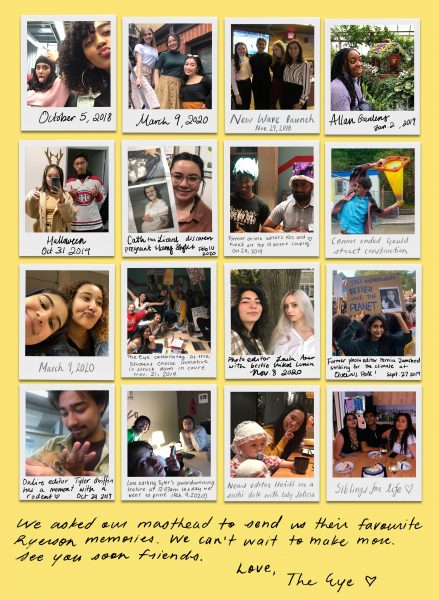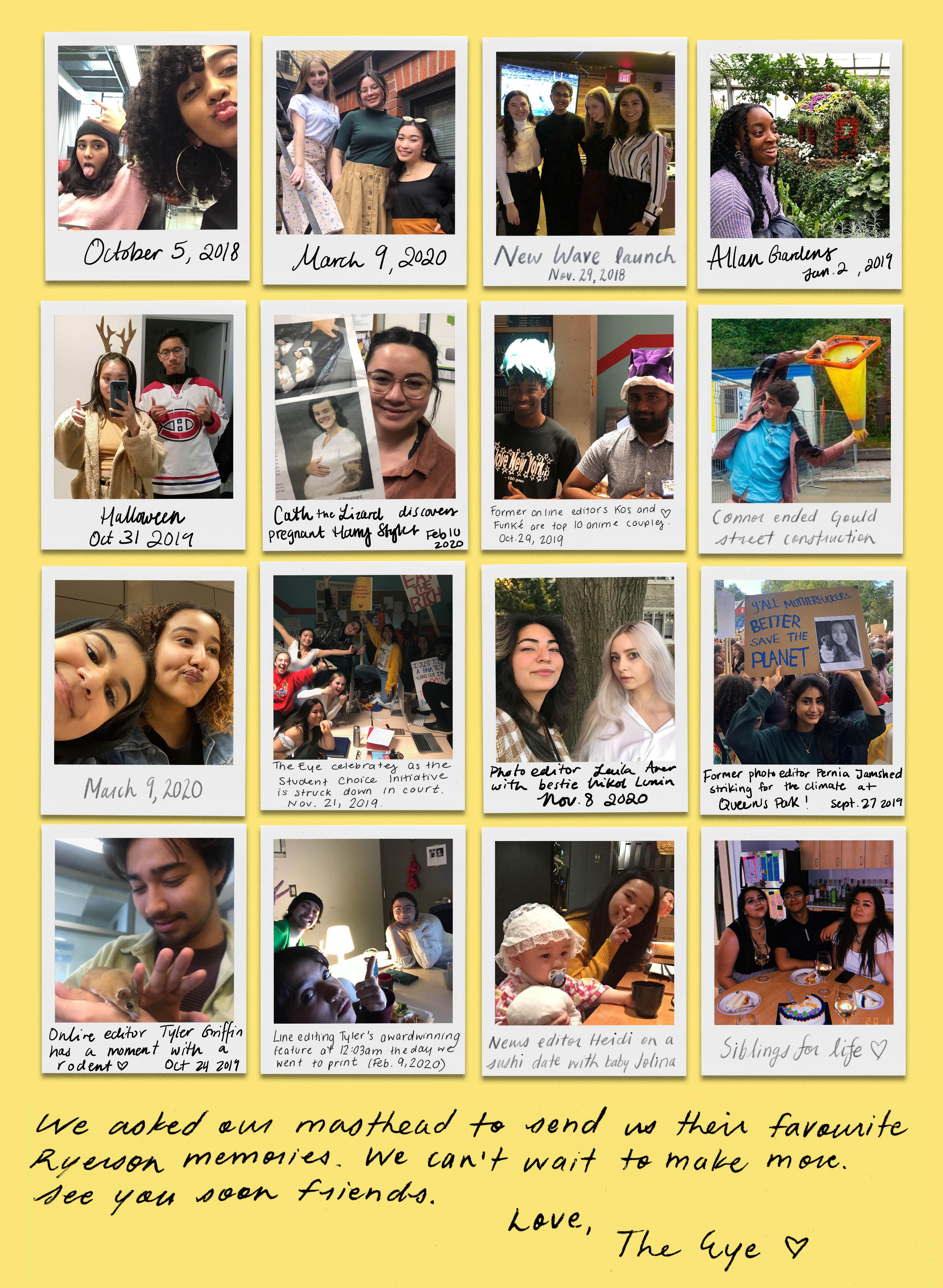By Catherine Abes
It’s been a year, Ryerson. While vague, that feels like the most succinct way I could possibly describe these past months.
So much has happened since September: discourse about taking down the Egerton Ryerson statue emerged once more because the university still needs convincing after two petitions, numerous open letters and several layers of paint. We lost the best Starbucks at Church and Gerrard streets. Ryerson casually opened a campus in Cairo without telling anyone in advance(?). And, as per usual, the Ryerson Students’ Union kept us on our toes with layoffs, impeachments and election cheating (oh my!) because, why not, I guess?
The year just wouldn’t stop throwing crises at us, but at the same time, the days somehow blended together. Such is the nature of Zoom University: watching life pass you by through a screen while you remain stagnant, at the same desk, in the same chair, in the same room and the same bubble—for an entire year.
I came into the role of editor-in-chief not knowing what my term would look like, but I never anticipated it would be a full year of online meetings, trying to parse out the right tone over emails and struggling to keep morale up as we accepted our paper wouldn’t return to stands for the foreseeable future. It’s hard not to feel robbed. It’s hard not to resent how tiring the year was.
In light of all this, why did we choose to focus our last issue on hope? Partly, because we have to. There will never be enough words to describe the year we have gone through: to re-do birthdays and holidays; to save the relationships we lost because being on a screen for longer than necessary was unbearable; to bring back the people that should still be here. We have lost so much this year that I couldn’t bear to talk about it more. Perhaps it’s naive, but we’ve spent a whole year having no choice but to confront reality. Now that there’s some room to imagine new futures, I’m choosing to focus on hope as a means of survival.
I also choose to talk about hope with the aim of helping it blossom. Like dandelions that push through the concrete, I’m starting to see glimmers of brighter days ahead. My dad got vaccinated. Ryerson president Mohamed Lachemi said he’s “optimistic” about a return to campus in the fall, which is, by Ryerson standards, about as clear of a commitment as we can expect. Despite our print process being derailed and some of us never even meeting in person, The Eyeopener masthead worked together to produce eleven beautiful issues and seven months’ worth of weekly digital content. And I had my first real, romantic and completely delusional crush in a long time. As silly as it sounds, that means I’m picturing myself being happy, and our masthead has material for roasting me which they’ve found joy in doing very often.
I’ll hug everyone for longer than I did before, tighter than I did before, never taking an embrace for granted again
I’ve also found hope in the courage and resilience of students who managed to organize despite being off-campus and overwhelmed by managing a fully-priced school year on top of work, other responsibilities and just trying to survive.
In June 2020, the Black Liberation Collective and Canadian Students for Sensible Drug Policy at Ryerson pushed administration to revoke its decision to allow special constables on campus. RTA students rallied behind a Black professor when her contract wasn’t renewed due to union technicalities, effectively helping her role be reinstated. And journalism students called out the Ryerson School of Journalism for systemic discrimination, demanding better supports for marginalized students within the program. Despite the little support students have received from their university this year, they continue to be selfless, empathetic and compassionate; daring to dream of a school that’s safer and more equitable for all.
These students make me hopeful for a generation that inherently understands why we should care for each other—something that’s been remiss in not just Ryerson’s administration, but in the government and older generations’ apathetic responses to the pandemic; valuing business over the health and wellbeing of others.
We’re far from the light at the end of the tunnel, but being hopeful finally feels less like a pipe dream and more like a reasonable way to cope. There’s an ending in sight and I’m clinging to it. In keeping with the prompt for our feature spread, I’ve been thinking about what my first day on campus will look like when this is all over.
I’ll come back to Kerr Hall Quad, where my friends and I can sit in a circle on the patchy field, less than six feet apart, enjoying Oakham breakfast specials that are a little on the lukewarm side but it doesn’t matter; they only cost $6 anyway. We’ll interrupt conversations to point out the dogs bounding onto the grass, chasing tennis balls.
I’ll hug everyone for longer than I did before, tighter than I did before, never taking an embrace for granted again. And the people around me—from new students who are just being introduced to that infamous Gould Street stench, to senior students in awe of seeing the construction finally finished—will be hopeful too.
Every day, this feels a little more attainable. I am so happy to have hope back.
Be safe and well, and see you soon.












Leave a Reply